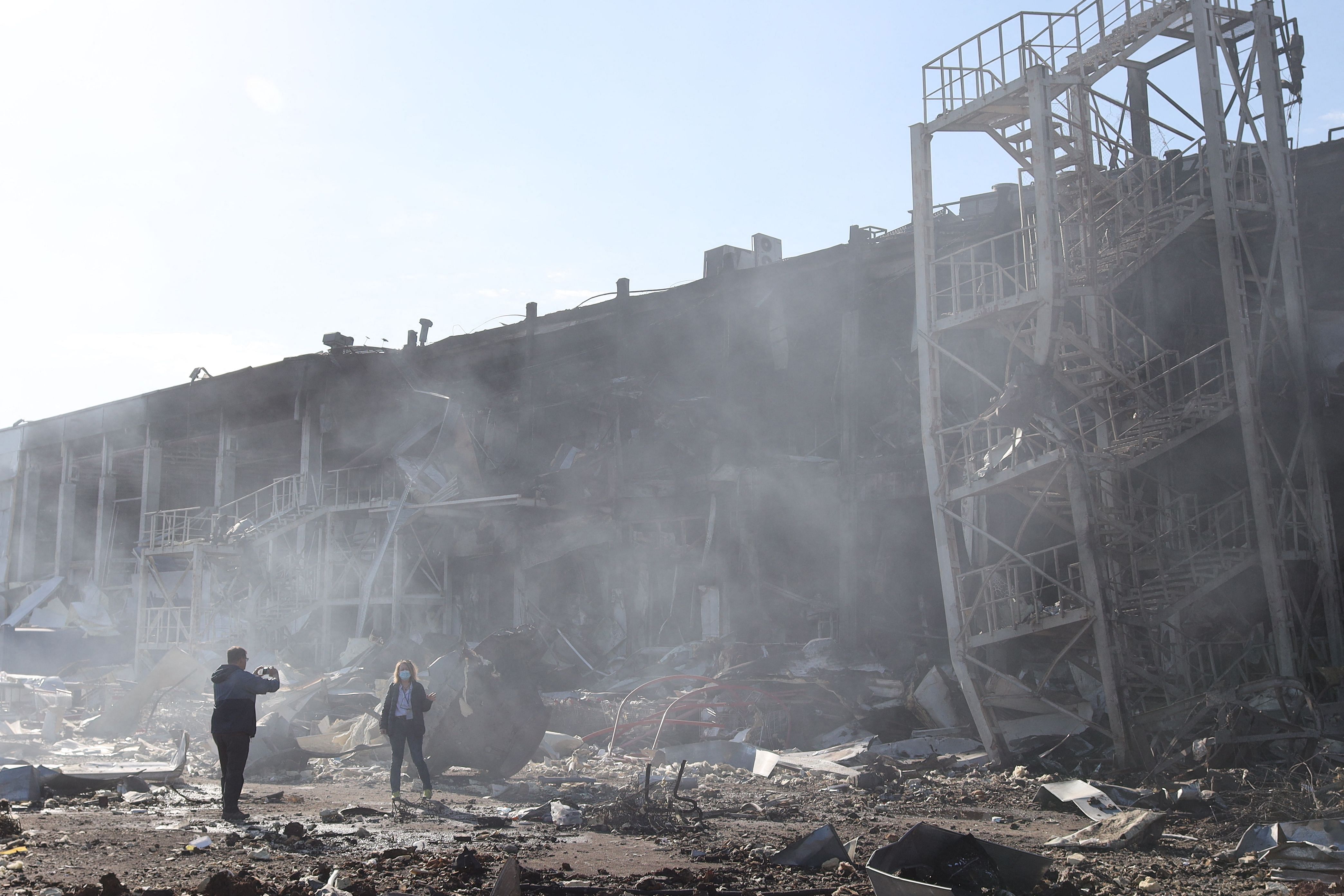For subscribers
100 days of Ukraine war
The 'butterfly effect' of the Russia-Ukraine war on the global economy
Sign up now: Get ST's newsletters delivered to your inbox

People taking pictures in front of the shopping and entertainment centre in the Ukrainian Black Sea city of Odesa on May 10.
PHOTO: AFP
Follow topic:
SINGAPORE - In the 1960s, meteorologist and pioneer of chaos theory Edward Lorenz determined that a butterfly flapping its wings could influence the path of a distant tornado several weeks away. Thus was born what has come to be called the "butterfly effect", the idea that a localised event can have a huge impact far away and cause lasting damage.
It is an apt metaphor for the economic and geopolitical consequences of Russia's war on Ukraine. Even though the two countries each account for less than 2 per cent of global gross domestic product, the war between them is already sending ripples across the world economy. It is impacting economic growth, inflation, food and energy markets, supply chains, financial systems, transportation networks and geopolitics. It has also led to a refugee crisis, with around 6 million Ukrainians having poured into other countries, mainly in Europe.

